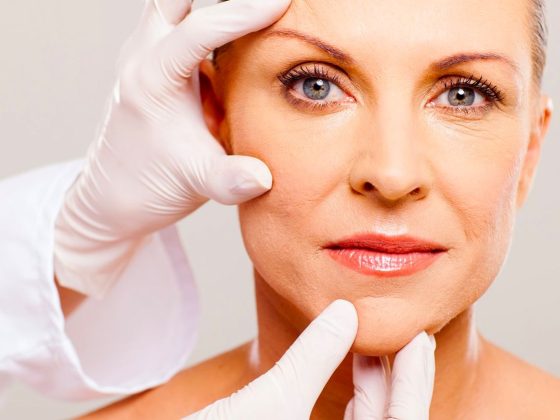When it comes to skin care, we live in a realm of expectation that is totally justified. Skin care is not just about helping us look better; it is about improving skin health. This improvement can lead to an improvement in overall health by reducing stress and improving self-esteem.
Since the skin is the largest organ of the body, it makes perfect sense to take care of it properly with carefully selected, safe and effective products to cleanse, nourish, beautify and protect it. Although skin care goals may differ for each individual, all skin care users are concerned with purchasing products that are effective, safe and of good quality.
Natural and organic skin care has become a permanent segment of the skin care market, but many clients still wonder if the quality, safe and effective product line for them is natural, organic or synthetic. This article was written to help you, their skin care professional, educate them while making that choice.
Natural vs. Organic
The is plenty of confusion and misunderstanding when it comes to the differences between natural and organic products. A good place to start is by discussing what natural, synthetic and organic mean for skin care.
Natural.
It is usually stated that natural refers to products containing ingredients that are derived from nature through one means or another. However, natural does not always mean organic, which is an important point to mention.
Synthetic.
Many skin care lines in the beauty market offer natural ingredients mixed with synthetic ingredients. Synthetic could be defined as a man-made ingredient or the formation of complex compounds by uniting more simple ones. This concept typically involves certain actions such as manipulation and artificial conversion of natural components to create newer versions. For example, the synthetic polymer nylon comes from petroleum refining and transformation, yet petroleum is classified as an organic substance. Still, the main concern with synthetic ingredients by the general public is the negative omen on health-related safety issues over prolonged use and possible toxicity and danger to the environment. Synthetic ingredients are commonly and sometimes mistakenly associated to being cheap, called chemicals or referred to as formula fillers.
Organic.
Organic is used to label ingredients or products containing those ingredients that are from a natural origin and are specifically unadulterated or non-manipulated to be as pure as nature intended. For some, this concept means the utilization of bare or raw ingredients that are free of chemical pesticides, fertilizers, growth stimulants, antibiotics, and without additional technological processing. It also encompasses the methods of how ingredient sources are obtained or harvested, and the “green” practices of the company behind the products.
Organic Standards
Although there are some limited regulations, no universal and comprehensive standards exist yet for “certified organic” products. As such, there are different points of view from a worldwide perspective on what truly defines organic and how currently established and renowned organizations regulate the use of the term in products for personal care.
In chemistry, the term organic refers to chemical compounds that contain carbon and are usually linked to biological origin. Going by this definition alone, it would present a challenge to formulate and label a product as organic if said product contained any added water, as water is comprised of hydrogen and oxygen and no carbon.
Skin care manufacturers around the world have found ways to formulate and label products to denote the inclusion of natural and organic ingredients for each case.
Organic certification organization ECOCERT addresses the labeling of organic products by conducting rigorous processes of approval and accreditation through inspections in many countries, before granting the organic certification seal. Only then, a certified company can display the ECOCERT logo on its products to let consumers know they can trust the legitimacy of the organic statement behind those formulas.
Since the U.S. Food and Drug Administration (FDA) does not define or regulate the term organic as it applies to cosmetics, body care, or personal care products, the United States Department of Agriculture (USDA) has created the National Organic Program (NOP).
This program regulates the term organic, but only if those personal care products contain or are made up of agricultural ingredients. The NOP clearly states, “If a cosmetic, body care product, or personal care product contains or is made up of agricultural ingredients, and can meet the USDA/NOP organic production, handling, processing and labeling standards, it may be eligible to be certified under the NOP regulations.
The operations which produce the organic agricultural ingredients, the handlers of these agricultural ingredients and the manufacturer of the final product must all be certified by a USDA-accredited organic certifying agent. Once they have been certified, cosmetics, personal care products, and body care products are eligible for the same four organic labeling categories as all other agricultural products, based on their organic content and other factors.”
These four organic labeling categories include “100% organic, organic, made with organic ingredients and with less than 70% organic ingredients. Each of these categories has specific guidelines to follow when considering eligibility, and any product that does not meet the criteria, may not state, imply or even convey in any way that the product is USDA-certified organic or meets the USDA organic standards.
The companies that achieve total organic content often do so by swapping the water in their products with natural juices or intrinsic liquid components of ingredients like fruits and vegetables. In general, most cosmetics, except for solid, dry or 100% oil-based formulas, contain water to a certain extent, with total percentage depending on the type and purpose of the product.
Going Beyond
Based on all the information provided above, the million-dollar question is, what should a person do to opt for the most effective, safest and best quality skin care products?
In a nutshell, certified organic products seem to be the straightforward and comprehensive answer, right? But it is not.
Synthetic.
Synthetic does not have to be a four letter word in the world of skin care. There are good and bad aspects to all ingredients. Synthetic ingredients shouldn’t cause concern when their action is temporary and mostly on the surface. Sometimes, the fastest and most effective way to solve skin problem are synthetic formulations like topical drugs or medications.
Of course, unsuitable effects are possible with extended application due to multiple variables. Be cognizant that many formulas mix natural ingredients with synthetic
ingredients such as fragrance, dyes, etc., which are generally only recognizable by those who carefully read labels.
Always look for the high quality with a low modification, with claims such as hypoallergenic, non-irritating and non-comedogenic. Also, avoid blacklisted ingredients concerning health safety and toxicity. Be especially careful with suspicious, inexpensive brands that may use low quality or blacklisted ingredients. Try to familiarize yourself beforehand with red-flagged ingredients.
Natural.
Not only does natural skin care help you achieve amazing, quick results, it brings you peace of mind when it comes to long-term use. Just remember, it all depends on the formula. Choose natural skin care based on the purity of the ingredients, organic origin, delivery systems and protection from deterioration and loss of potency.
Green technology is of utmost importance if deep and long-lasting results are a decisive factor. Consider that even among natural ingredients, there are quality tiers. Aim for high-end formulas that back up their claims. That means researching the company’s track record and reputation and contacting them as needed. Make sure the ingredients are proven effective and devoid of potentially allergenic side effects or contamination from the source.
Avoid potentially questionable ingredients regarding toxicity and health safety concerns. Always think of the environment and others and seek out biodegradable formulas and/or recyclable packaging.
Organic.
Organic products are most often safe and of good quality, but they are not always the best at providing efficacy. This is because organic ingredients tend to be limited regarding penetration into the skin, oxidation, degeneration, etc.
Most organic ingredients, but not all, have particles that are too big (heavy) to enter the skin. On the other end, organic formulas tend to have a much shorter shelf-life despite the efforts to preserve them.
Due to the fact that additional processing and technology aids cannot be used (to stay within regulations), the available options to obtain long-lasting results from products and treatments of this kind are scarce.
It is not uncommon for an organic product to offer benefits that are only superficial to the skin, but there are some exceptions. Some organic companies have even looked for ways around those limitations by using enzymes to break down ingredients and applying pasty formulas that seal in actives. These efforts can be improved still with proper micronization, microemulsification and dedicated encapsulation and delivery systems.
Consider an organic product line that takes ingredients one step further in its green processing to ensure their activity in the skin. For example, an organic ingredient can be naturally micronized and put into an also natural vehicle that will protect it from degradation and then deliver it deeply at maximum potency where it can be of real use to the skin.
So, the wise choice comes from educating yourself first, and then basing your decision on research performed on the manufacturing company. Trust solid research and aim beyond.
References:
- Volpato, Luisa. “Beauty: More than just skin deep.” PS Post Script Feb 2013 (2013): 42-43.
- Evans, Michelle. “Top 26 Best Non-Comedogenic Primers for Acne-Prone Skin.”
- Boozalis, Emily, and Shivani Patel. “Clinical utility of marketing terms used for over-the-counter dermatologic products.” Journal of Dermatological Treatment 29.8 (2018): 841-845.








